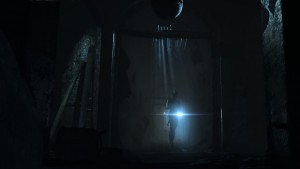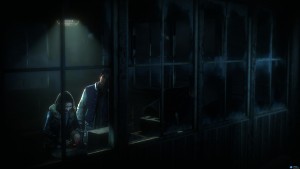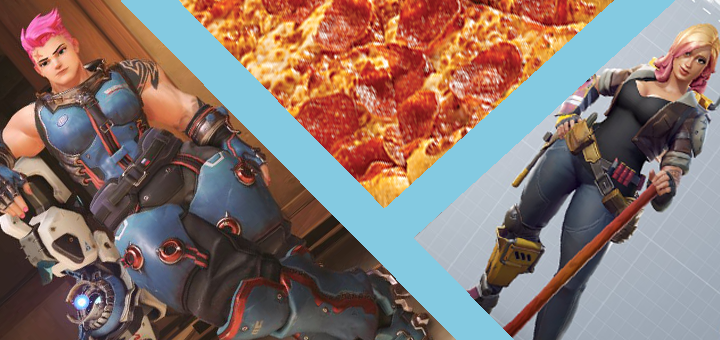(Spoilers ahead)
Supermassive Games’ Until Dawn had me rolling my eyes from moment one. The first chapter, with its cast of self-centered teenagers and cliché narrative, annoyed me to my bones because it’s a scenario that perfectly fits in the horror movie framework and it’s one I’ve seen countless times before. I was frustrated because I wanted, no, deserved something more than just cookie cutter characters and a formulaic plot. I dove into the game with blinders on and, given its rave reviews and impressive game scores, half expected a complex experience or, at the very least, an experience that compelled me to want to dig deeper, but the narrative wasn’t giving me what I needed or may have wanted. Moments before I was about to launch my controller at the screen, one unique feature gave me pause, and that was the utilization and characterization of the camera.
 While Mike, the traditional hero, and Jessica, his bubbly girlfriend, traversed the snowy landscape, I tilted my head some as the camera angle shifted and became something more than just a game feature. The camera had ensnared my attention much earlier in the game because it was in constant motion, swinging around or moving in peculiar locations, which was frustrating and somewhat disorienting at times. While guiding Mike and Jessica along the snow-packed paths, I noticed the positioning of the camera and how it was partially hidden behind a tree. The camera turned into a voyeur in the woods, always watching. At the beginning of the game, there appears to be multiple antagonists running about: a masked serial killer and an inhuman character. What about a third or additional character? I began creating a narrative in my own mind and, by doing this, I found meaning in a space where I wasn’t able to before.
While Mike, the traditional hero, and Jessica, his bubbly girlfriend, traversed the snowy landscape, I tilted my head some as the camera angle shifted and became something more than just a game feature. The camera had ensnared my attention much earlier in the game because it was in constant motion, swinging around or moving in peculiar locations, which was frustrating and somewhat disorienting at times. While guiding Mike and Jessica along the snow-packed paths, I noticed the positioning of the camera and how it was partially hidden behind a tree. The camera turned into a voyeur in the woods, always watching. At the beginning of the game, there appears to be multiple antagonists running about: a masked serial killer and an inhuman character. What about a third or additional character? I began creating a narrative in my own mind and, by doing this, I found meaning in a space where I wasn’t able to before.
The silent, bodiless character of my own design became a far more horrifying entity than the central antagonists, a horde of monsters called Wendigo. The characterization of the camera happened due to a combination of the camera’s static position, the way in which it moved or swung about, and me crafting my own narrative in my head. I began calling the character the voyeur in the woods because it liked to dutifully watch, from high up in the branches or down low behind the bushes, whoever walked past it. The character’s silent nature reminded me of monsters like Slender Man, a notoriously silent antagonist known for stalking his prey and leaving child-like doodles all over some random forest. There’s a great deal of fear to be explored in the concept of silence and nothingness, especially because the two are so deeply intertwined. Though silence can be soothing, the presentation of silence is different in a horror framework because it’s intended to be uncomfortable and anxiety-inducing.
 The character’s bodilessness feeds into fear of the unknown, a common marker of the horror framework. Who is this character? What does he or she look like? What about the character’s backstory? Between the utter silence and bodilessness, it’s easy for me to project myself onto the character I’ve personally fathomed. However, as the camera panned out or zoomed in, I began to question whether or not I was the killer or the spooky/demented character I fabricated. The camera is a game feature and game features, I believe, add a lot to the narrative and can sometimes weave their own stories separate from the plot.
The character’s bodilessness feeds into fear of the unknown, a common marker of the horror framework. Who is this character? What does he or she look like? What about the character’s backstory? Between the utter silence and bodilessness, it’s easy for me to project myself onto the character I’ve personally fathomed. However, as the camera panned out or zoomed in, I began to question whether or not I was the killer or the spooky/demented character I fabricated. The camera is a game feature and game features, I believe, add a lot to the narrative and can sometimes weave their own stories separate from the plot.
By characterizing the character and lending my own narrative, I got what I needed out of Until Dawn. It served as a kind of filler for the plot holes, the stereotypical characters, and so on. Though I later found genuine enjoyment in the campiness of the experience after a second playthrough with my boyfriend, the first playthrough was rough and difficult for me to get into. I wasn’t able to have a deviant play experience, but I was able to have a deviant narrative experience that I was in control of and found meaning within.




